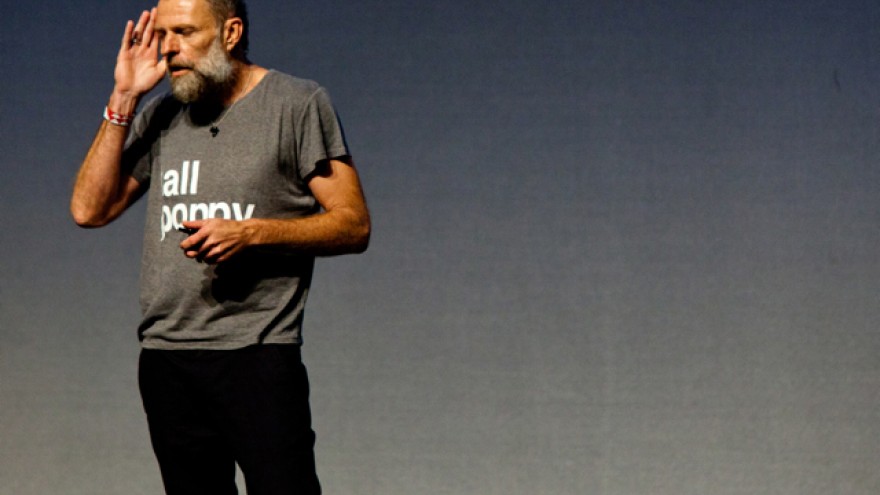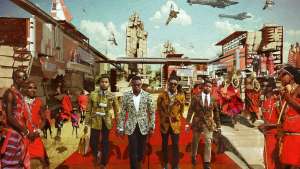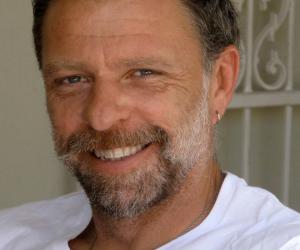From the Series
Conversations with Porky Hefer wind their way along organically. He’s describing his latest project – a house he’s building in Namibia – and the next thing you know, you’re talking about Buckminster Fuller, curved walls, the insatiable human ego and Tom Dixon knock-offs.
The stone and thatch house is the culmination of a long-standing interest in sustainable architecture that is only a hop, skip and jump from his work weaving giant nests.
“It’s all the same thing,” he says, referring to his foray into architecture. “Animals build to form, and humans build to material.”
It’s clear “sustainability” means much more to him than the efficient use of materials, though. “Animals don’t overexert themselves, whereas the first thing we do is get a bond, which puts us in danger because it’s not secure."
Sustainable architecture is so good because it uses only what can be found locally, he opines.
Hefer wants us to be more like Bucky, whose iconic geodesic domes didn’t catch on because people couldn’t hang up pictures on their curved walls. “We’re so sucked into using the materials that the construction industry says we should use. We should be asking what’s good for the universe but our egos always get in the way.”
It’s sustainability versus society’s small-minded regard for the bottom line. So Tom Dixon comes out with a new light that’s too expensive for most people to buy, which gives rise to an avalanche of cheaply made replicas. “It’s always ‘make way for the moneymakers’,” he says.
Needless to say, the house in Namibia will have lots of curved walls. It’s based on the concept of the sociable weaver’s nest. Two thirds of the structure will be made of thatch – not only roof but walls too. “I’ve been working on it for five years, trying to find the right builder,” Hefer says, “someone who understands what I am trying to do.”
The entire structure is elevated off the ground to protect it from insects and snakes and to allow for air movement that will ventilate different sections at different times of the day.
“The client – a friend – asked for the east elevation. I told him I don’t have one yet because I don’t know exactly what it will be. He doesn’t know what he’s getting. I don’t know what we’re getting, but I know how we’re going to get there.”
He’s hoping to be finished in March. It is his first project under his new name, Vernacular Architecture and Design. “Vernacular means ‘of a place’," he says.
Instead of bringing in techniques from Australia and Italy, we are using local materials, techniques and craftsmen. The bricks are made on site from local materials.
He hopes the final product will blur the lines between luxurious “five-star” buildings and the more humble dwellings that workers in the area live in.
Playing with perceptions is a theme in Hefer’s work. His nests are woven by the Cape Society for the Blind, known for their production of standard-issue cane furniture. “Some people don't like their aesthetic and wouldn’t walk in there [the Cape Society for the Blind's shop],” says Hefer. “But when you take them out of an aesthetic that they're used to and create something brand new, like a nest, it’s amazing!” He’s developed his own weaving skills to the point that he now teaches them how to make his designs.
“It’s about understanding the rules and then subverting them to your benefit and being unique within that,” he explains. “Most people are like sheep.”
He purposely stays away from the internet, opting instead for books and the rich store of design history they offer up. “It’s important to see how brave people were,” he notes.
I try to keep off current trends; I prefer to think of historical trends and try to pick up patterns – because life is pattern.
The international market is clearly responding – his work is earning a growing following, with two overseas exhibitions coming up: a select group show at R & Company Gallery in New York in March 2015 and a show at Themes & Variations in London in 2016.
He encourages young designers to find their own voices. “Geography is the new religion,” he says, referring to the specific contexts that shape people’s identity. “No one has had the influences that you’ve had, so you have to be unique and you have to act on that uniqueness. It’s very easy for people to follow a trend, to jump on a trend and think that’s going to be something that will take them into the future.”
While he concedes that may work some of the time, “you have to be doing something that is different. Especially if you’re from South Africa… and especially if you’re from Cape Town. You have to express that uniqueness.”
He’s comfortable with learning as he goes along. “You’ve got to be brave enough to go on a journey,” he says.
This article was based in part on an on-stage discussion between Porky Hefer and Julian McGowan at Business of Design in Cape Town on 15 October 2014.










